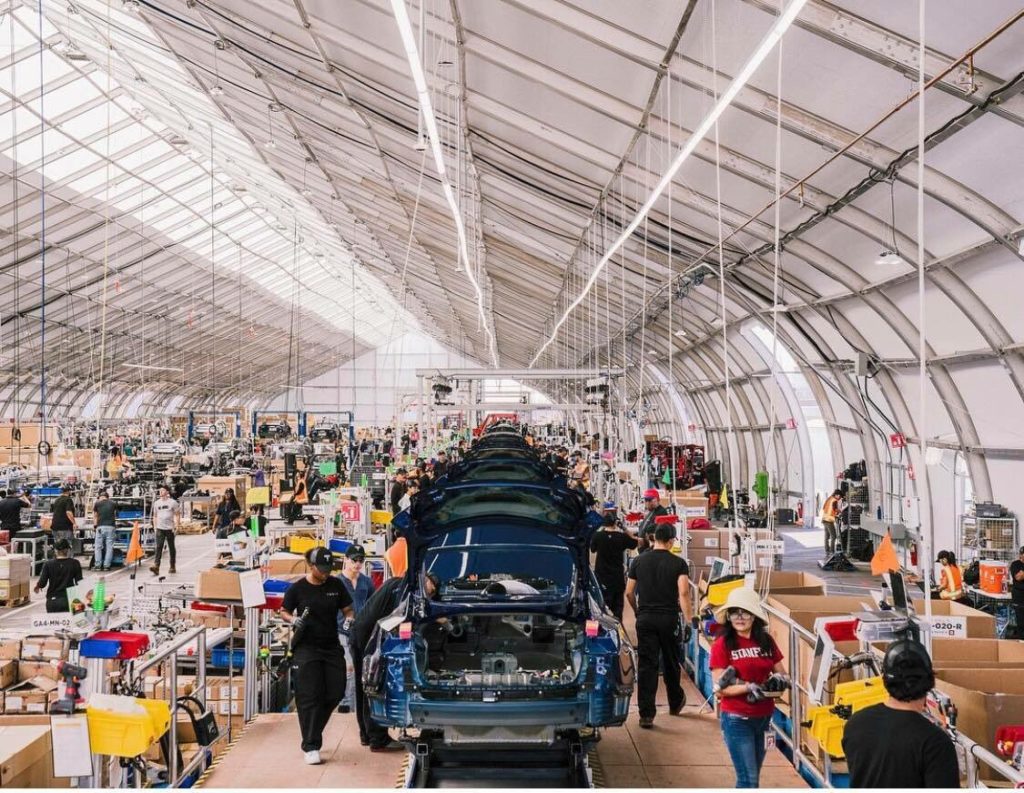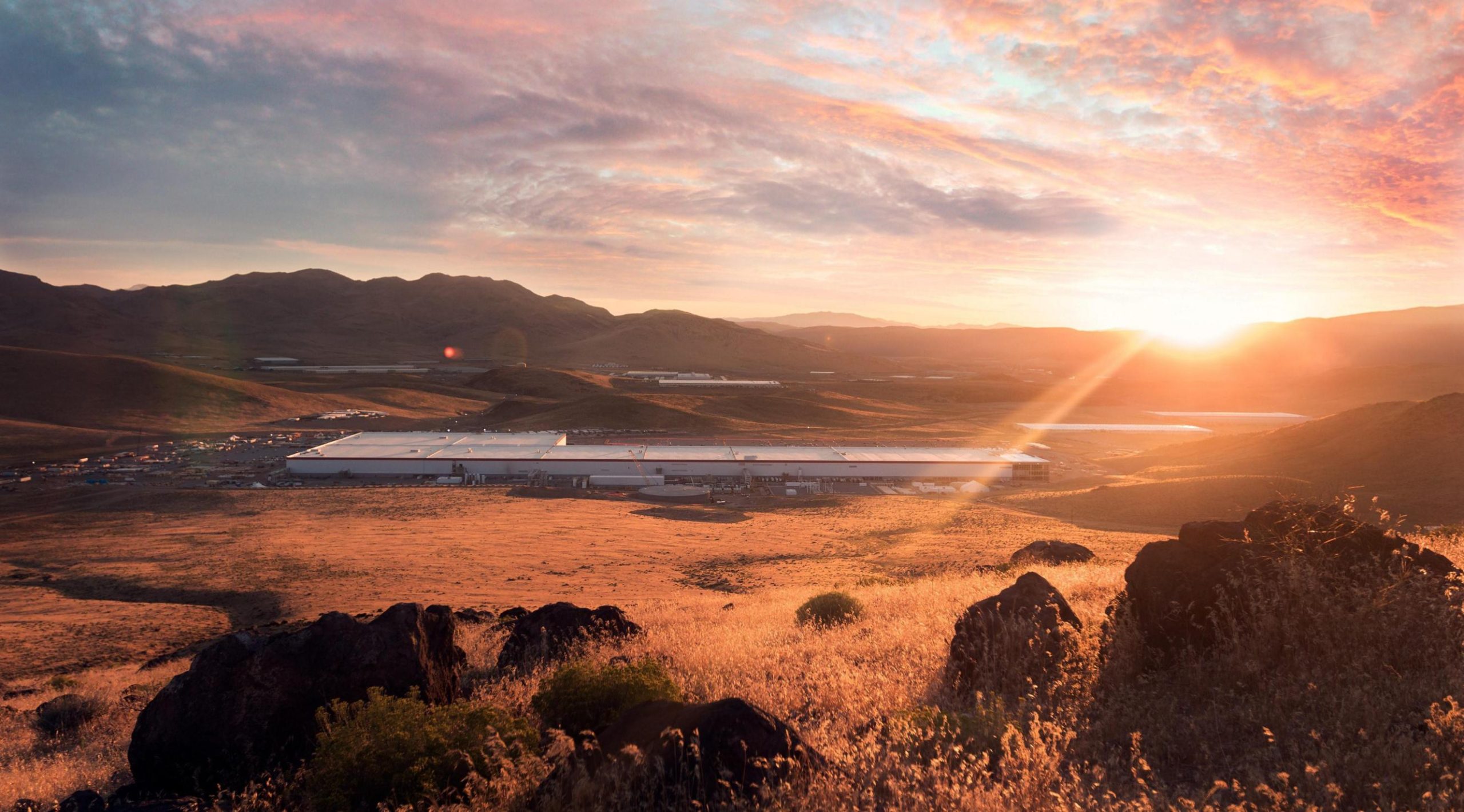
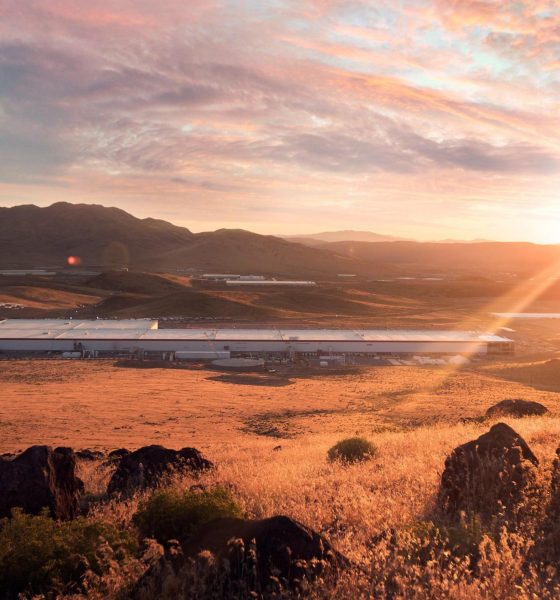
News
Lithium mine near Tesla Gigafactory plans to break ground as global shortage rears head
Just 150 miles north of Tesla’s Gigafactory, a plan is brewing to a build a massive mine capable of growing the world’s lithium carbonate supply by a full 15% as early as 2022 and more than 20% by 2026, compared to 2018. Tesla could, in other words, find itself neighbors with one of the largest concentrated supplies of lithium carbonate in the world less than a decade from now.
Known as Lithium Americas, the company behind the study has conservatively estimated that it could break ground on its prospective Northern Nevada Li2CO3 mine as early as the end of 2020 and ramp up to an annual output of 30,000 metric tons of the basic Li-ion battery precursor just 21 months after that. The mine’s output would then double by 2026, coming to rest at a maximum annual lithium carbonate output of 60,000 tons.
Theoretical estimates conducted by a number of academic parties in the 2010s have shown that any given high-quality lithium-ion battery would be expected to require 2-3 kilograms of lithium carbonate per kWh of final capacity, although the absolute physical minimum is closer to 0.4 kg. To sustain Gigafactory 1’s 35 GWh 2018 production goal, that single factory alone could require between 60,000 and 85,000 tons of lithium carbonate annually to sustain its battery production operations alone.
- The Model 3 assembly line inside the Sprung Structure in Tesla’s Fremont factory. [Credit: The New York Times]
- Building giant factories like Gigafactory 2 demands major capital investments that often require private equity sales. (Tesla)
To put this requirement in context, the entire global supply of lithium carbonate is expected to peak at ~250,000 tons in 2018 after astounding YoY production growth of 21.5% from 2016 to 2017 – Tesla’s demands this year could thus easily swallow 25-30% of the entire global lithium carbonate supply.
Despite those staggering numbers, Gigafactory 1 production is still expected to ramp (albeit based on optimistic 2016 Elon Musk numbers) as high as 105 GWh of cells and 150 GWh of packs annually by the time it is fully completed, likely a few years after the original 2020 estimate. Roughly 7 times the volume of Tesla’s 2018 production goals for the massive factory, sustaining that final volume of production (255 GWh annually) would literally require the global supply of lithium carbonate to grow by a bare minimum of 250% in less than half a decade. To reiterate, that is for a single Gigafactory, of which Tesla plans to construct several more in China, Europe, and elsewhere.
- A peek inside a segment of a Tesla Model 3 battery pack.
- Gayle King tours the Tesla Model 3 production line with CEO Elon Musk at the Fremont factory [Source: CBS This Morning]
Put simply, Tesla is going to need every ounce of lithium supply they can get their hands on, and Lithium Americas’ prospective Nevada offering could theoretically supplement that total required supply by as much as 10% by the mid-2020s. Tesla, however, is already hard at work attempting to secure a strong and satisfactory supply of lithium and other rare earth metals and materials required to produce premium-grade Li-on batteries.
Tesla already has agreements to buy lithium from a somewhat smaller Nevadan effort from Pure Energy Minerals (phase 1 production NET 2020) and Bacanora’s Sonora Lithium prospect (NET 2020), lithium hydroxide (a product of lithium carbonate) from Australian upstart Kidman Resources (NET 2021), and also plans to invest directly in lithium heavyweight SQM to strengthen a foothold in Chile, the current owner of ~50% of the world’s lithium mining rights.

News
Tesla quietly flexes FSD’s reliability amid Waymo blackout in San Francisco
“Tesla Robotaxis were unaffected by the SF power outage,” Musk wrote in his post.

Tesla highlighted its Full Self-Driving (Supervised) system’s robustness this week by sharing dashcam footage of a vehicle in FSD navigating pitch-black San Francisco streets during the city’s widespread power outage.
While Waymo’s robotaxis stalled and caused traffic jams, Tesla’s vision-only approach kept operating seamlessly without remote intervention. Elon Musk amplified the clip, highlighting the contrast between the two systems.
Tesla FSD handles total darkness
The @Tesla_AI account posted a video from a Model Y operating on FSD during San Francisco’s blackout. As could be seen in the video, streetlights, traffic signals, and surrounding illumination were completely out, but the vehicle drove confidently and cautiously, just like a proficient human driver.
Musk reposted the clip, adding context to reports of Waymo vehicles struggling in the same conditions. “Tesla Robotaxis were unaffected by the SF power outage,” Musk wrote in his post.
Musk and the Tesla AI team’s posts highlight the idea that FSD operates a lot like any experienced human driver. Since the system does not rely on a variety of sensors and a complicated symphony of factors, vehicles could technically navigate challenging circumstances as they emerge. This definitely seemed to be the case in San Francisco.
Waymo’s blackout struggles
Waymo faced scrutiny after multiple self-driving Jaguar I-PACE taxis stopped functioning during the blackout, blocking lanes, causing traffic jams, and requiring manual retrieval. Videos shared during the power outage showed fleets of Waymo vehicles just stopping in the middle of the road, seemingly confused about what to do when the lights go out.
In a comment, Waymo stated that its vehicles treat nonfunctional signals as four-way stops, but “the sheer scale of the outage led to instances where vehicles remained stationary longer than usual to confirm the state of the affected intersections. This contributed to traffic friction during the height of the congestion.”
A company spokesperson also shared some thoughts about the incidents. “Yesterday’s power outage was a widespread event that caused gridlock across San Francisco, with non-functioning traffic signals and transit disruptions. While the failure of the utility infrastructure was significant, we are committed to ensuring our technology adjusts to traffic flow during such events,” the Waymo spokesperson stated, adding that it is “focused on rapidly integrating the lessons learned from this event, and are committed to earning and maintaining the trust of the communities we serve every day.”
News
Waymo scrutinized after self-driving taxis cause traffic jams during SF blackout
It’s not farfetched to speculate that it would have been a doomsday scenario for Tesla had FSD behaved this way.
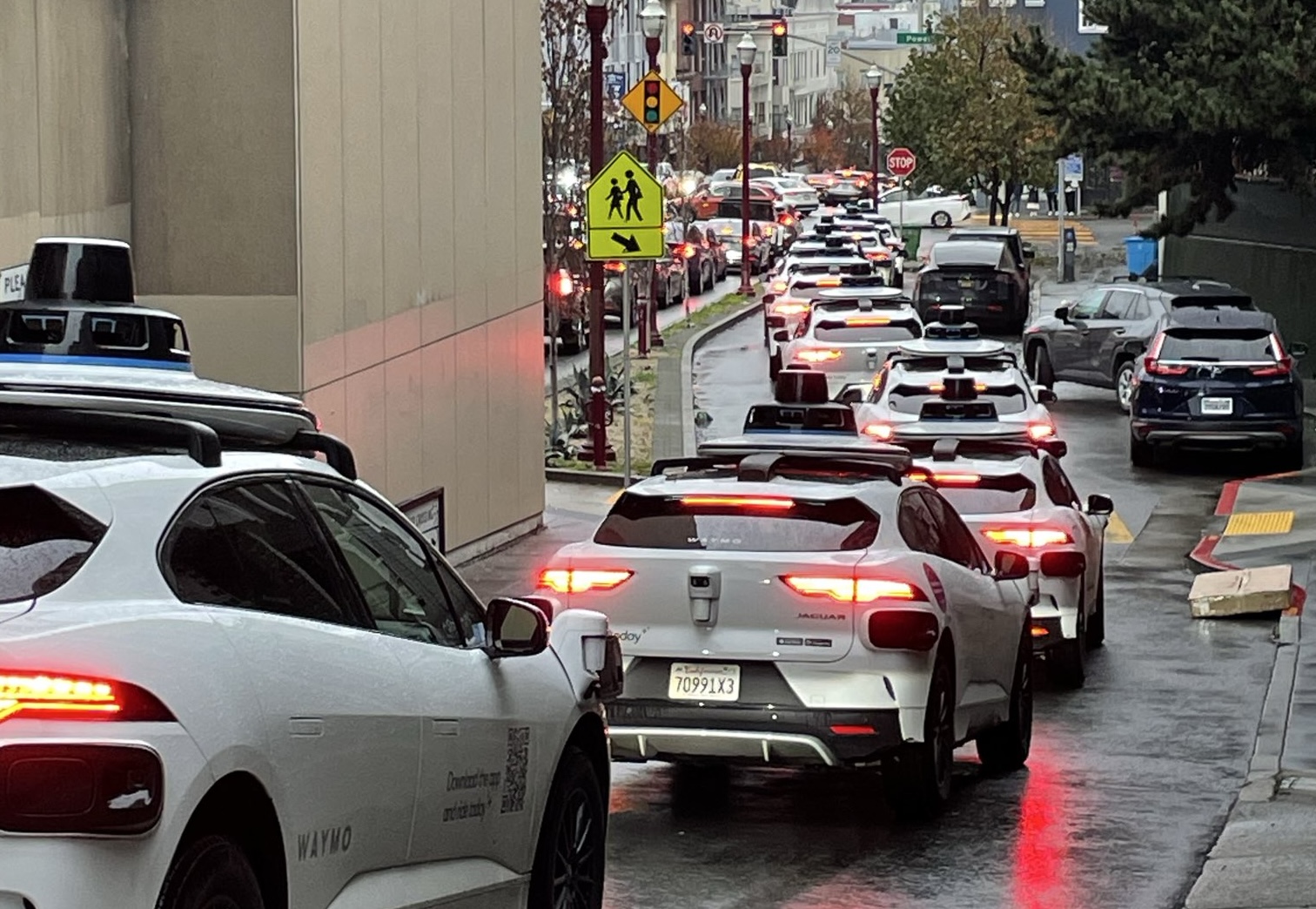
A power outage across San Francisco over the weekend forced numerous Waymo self-driving taxis to stop at darkened intersections and cause traffic blockages in multiple locations across the city. The disruption left riders stranded, frustrated drivers blocked, and city officials stepping in as the Alphabet-owned company temporarily suspended service amid the widespread gridlock.
Needless to say, it would likely have been a doomsday scenario for Tesla had FSD behaved in a similar way, especially if fleets of its robotaxis blocked traffic for numerous drivers.
Power outage halts Waymo fleet
The outage knocked out electricity for tens of thousands of customers, leaving traffic signals dark across large parts of the city, as noted in a report from the New York Times. Waymo vehicles began stopping at intersections and remained stationary for extended periods, seemingly unable to operate. Tow truck operators worked through the night removing immobilized vehicles, while videos circulated online showing Waymos with hazard lights flashing as traffic backed up around them.
Waymo later confirmed that it had paused its Bay Area ride-hailing service after the San Francisco mayor’s office contacted the company about the congestion its vehicles were contributing to. Service began coming back online shortly after 3:30 p.m. local time, though some users still reported being unable to request rides. Waymo maintained that no injuries or accidents were reported during the outage.
Autonomous cars during emergencies
The incident surprised industry observers since autonomous vehicles are designed to function during signal outages and temporary connectivity losses. Waymo stated that its vehicles treat nonfunctional signals as four-way stops, but “the sheer scale of the outage led to instances where vehicles remained stationary longer than usual to confirm the state of the affected intersections. This contributed to traffic friction during the height of the congestion.” Experts suggested the problem may have been linked to the vehicles’ reliance on remote assistance teams, which help resolve complex situations the cars cannot handle independently.
“Yesterday’s power outage was a widespread event that caused gridlock across San Francisco, with non-functioning traffic signals and transit disruptions. While the failure of the utility infrastructure was significant, we are committed to ensuring our technology adjusts to traffic flow during such events,” the Waymo spokesperson stated, adding that it is “focused on rapidly integrating the lessons learned from this event, and are committed to earning and maintaining the trust of the communities we serve every day.”
News
Tesla aims to combat common Full Self-Driving problem with new patent
Tesla writes in the patent that its autonomous and semi-autonomous vehicles are heavily reliant on camera systems to navigate and interact with their environment.
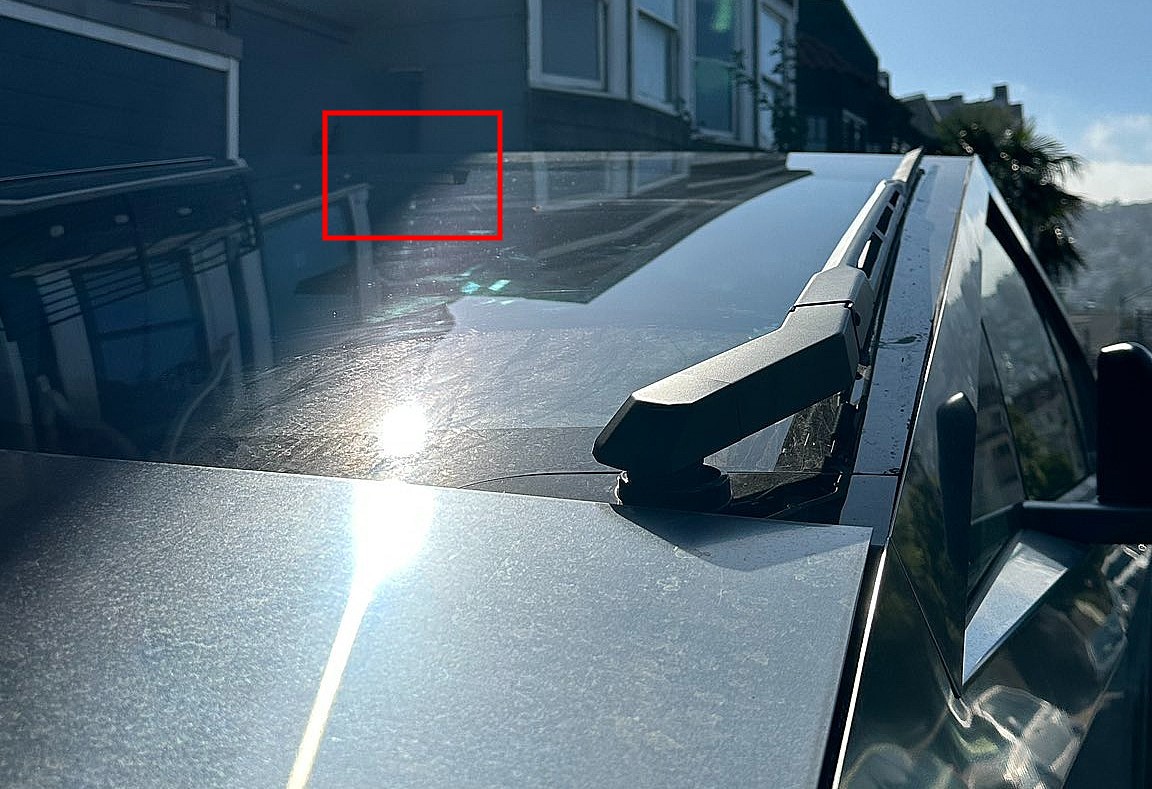
Tesla is aiming to combat a common Full Self-Driving problem with a new patent.
One issue with Tesla’s vision-based approach is that sunlight glare can become a troublesome element of everyday travel. Full Self-Driving is certainly an amazing technology, but there are still things Tesla is aiming to figure out with its development.
Unfortunately, it is extremely difficult to get around this issue, and even humans need ways to combat it when they’re driving, as we commonly use sunglasses or sun visors to give us better visibility.
Cameras obviously do not have these ways to fight sunglare, but a new patent Tesla recently had published aims to fight this through a “glare shield.”
Tesla writes in the patent that its autonomous and semi-autonomous vehicles are heavily reliant on camera systems to navigate and interact with their environment.

The ability to see surroundings is crucial for accurate performance, and glare is one element of interference that has yet to be confronted.
Tesla described the patent, which will utilize “a textured surface composed of an array of micro-cones, or cone-shaped formations, which serve to scatter incident light in various directions, thereby reducing glare and improving camera vision.”

The patent was first spotted by Not a Tesla App.
The design of the micro-cones is the first element of the puzzle to fight the excess glare. The patent says they are “optimized in size, angle, and orientation to minimize Total Hemispherical Reflectance (THR) and reflection penalty, enhancing the camera’s ability to accurately interpret visual data.”
Additionally, there is an electromechanical system for dynamic orientation adjustment, which will allow the micro-cones to move based on the angle of external light sources.
This is not the only thing Tesla is mulling to resolve issues with sunlight glare, as it has also worked on two other ways to combat the problem. One thing the company has discussed is a direct photon count.
CEO Elon Musk said during the Q2 Earnings Call:
“We use an approach which is direct photon count. When you see a processed image, so the image that goes from the sort of photon counter — the silicon photon counter — that then goes through a digital signal processor or image signal processor, that’s normally what happens. And then the image that you see looks all washed out, because if you point the camera at the sun, the post-processing of the photon counting washes things out.”
Future Hardware iterations, like Hardware 5 and Hardware 6, could also integrate better solutions for the sunglare issue, such as neutral density filters or heated lenses, aiming to solve glare more effectively.
